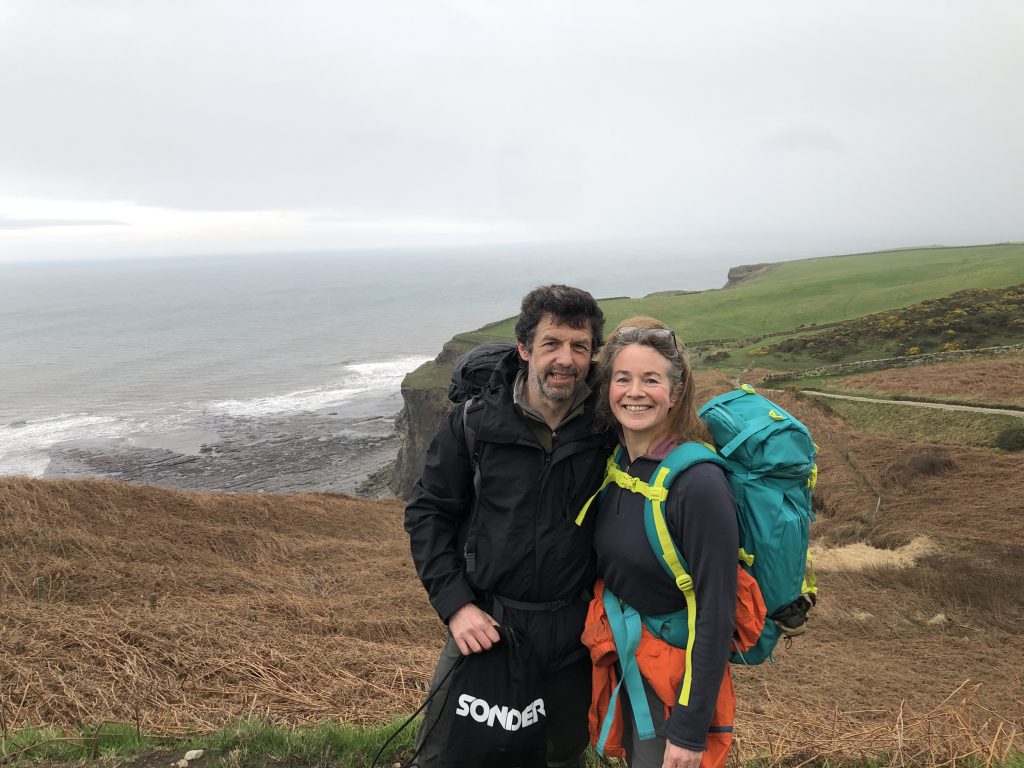Taking the p*** in Boggle Hole

Our youngest and most dangerous child was taken away for a friend’s birthday treat this weekend, so the Prof spotted the opportunity for us to abandon the teens and head off for a trip down the coast to Boggle Hole Youth Hostel in North Yorkshire. She and I took the train from Newcastle through the heavily industrialised Tees Valley and thence along the startlingly beautiful Esk Valley line to the dramatic spiritual home of Dracula that is Whitby.
From Whitby we slithered our way along the incredibly muddy Cleveland Way, through the ridiculously picturesque Robin Hood’s Bay village which seems to pour over the cliffs into the sea, to Boggle Hole (a Boggle is a hobgoblin in case you were wondering…)
Boggle Hole Youth Hostel was created from an old water mill hidden in a deep river valley in the 1930s. We were staying in the newly built Crows’ Nest annex perched on one side of the valley. The YHA is clearly proud of the solar panels and heat pump technology in the annex, cutting the carbon footprint of the previous building in half, and the recycling facilities were first class. The place was chock full of families and the kids seemed to think it was brilliant, as did we.
On Sunday, we did a 10 mile circular walk starting along the dismantled Whitby to Scarborough railway as far as Ravenscar. Ravenscar is famous for being the village that never was, kerb stones in the fields showing the building plots that were sold but never built – somebody did well out of it, lots of people clearly didn’t. On the home leg, back on the muddy cliff top path, we stopped at the site of an old Alum works which once employed 100 people and I wallowed in the industrial geekitude of the interpretation panels.
Alum was used as a fixative for fabric dyes and was made out of a mineral mined from the slopes above us, plus some seaweed from the shore, and human urine. Lots of human urine. So much so they set up public urinals in Newcastle, Scarborough and Hull to capture it and literally ship it along the coast to Ravenscar (or Peak as it was called before the land-flogging publicists rebranded it – maybe the ‘k’ was silent).
As I blogged last week, 20 years ago I set up the Tees Valley Industrial Symbiosis Project to find practical uses of waste(d) material, forming synergies between industries just up the coast. In fact, it was working on Teesside that introduced me to this part of the world – by coincidence, I bumped into an ex-colleague on the railway path.
Anyway, to make Industrial Symbiosis work, you have to see the opportunity in everything that we usually see as ‘waste’ – hence my mantra that waste is a verb, not a noun. It is a real shame that we don’t use the chemical properties of urine for practical purposes as they did in the 18th and 19th Century, rather than seeing it as a problem that needs treating. Don’t get me wrong, the Alum works was almost certainly an environmental blackspot, but I respected their resourcefulness in finding at least one Sustainable raw material, without any squeamishness.
This morning we walked on the old railway line back to Whitby, going about twice as fast on the cinders than our slog on Friday along the quagmire path below, before getting the train back along the Esk, around Teesside, and then home. A lovely low carbon weekend and some ruminations of the nature of ‘waste’.

